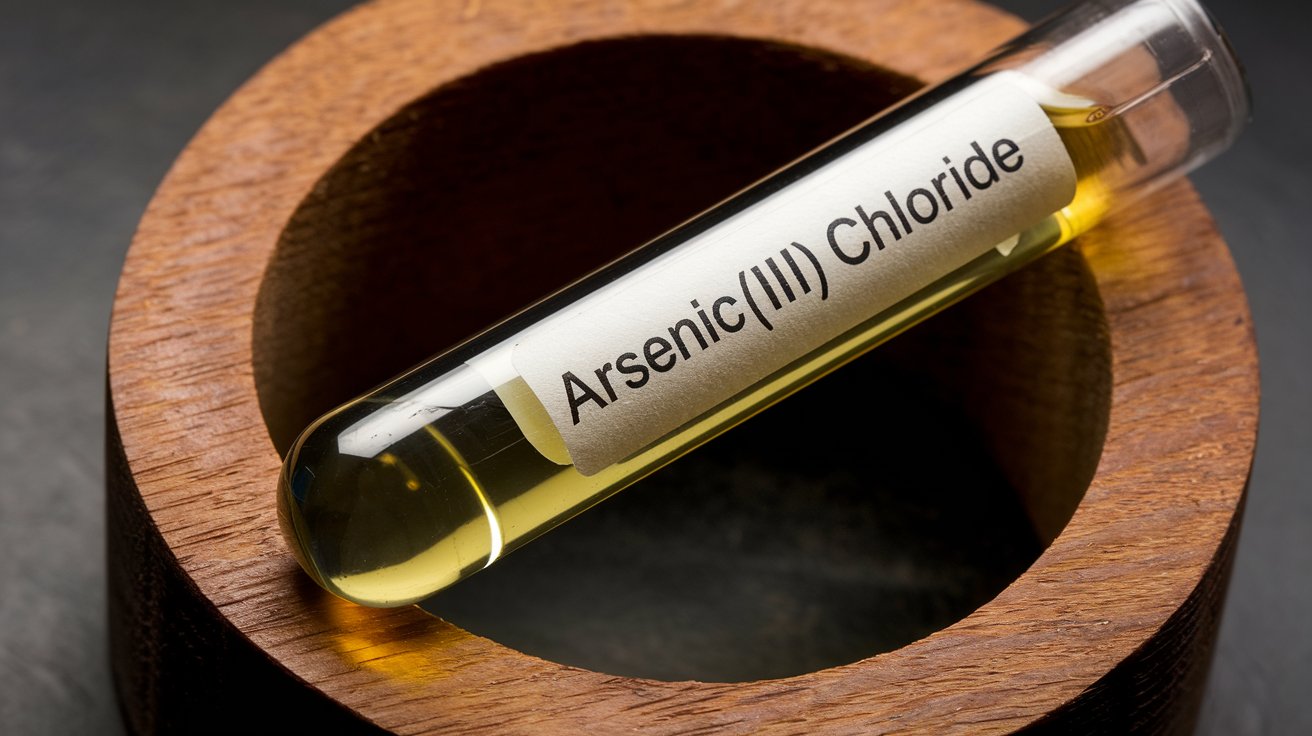
Arsenic(III) chloride might sound like a mouthful, but it's a fascinating compound with some intriguing properties. This chemical, also known as arsenic trichloride, is a colorless liquid that can be quite dangerous if not handled properly. Used in various industrial processes, it has a significant role in the production of semiconductors and glass. But there's more to it than just its industrial uses. Did you know that arsenic trichloride has been studied for its potential applications in organic synthesis? Or that it has a pungent odor similar to garlic? Stick around as we dive into 25 facts about this unique compound, shedding light on its characteristics, uses, and safety measures.
Key Takeaways:
- Arsenic(III) chloride, also known as arsenic trichloride, is a highly toxic compound with a pungent odor. It has a rich historical background and is used in various fields despite its dangers.
- Proper safety measures, including protective equipment and ventilation, are crucial when handling arsenic(III) chloride due to its high toxicity. Disposal must follow strict environmental regulations to prevent contamination.
What is Arsenic(III) Chloride?
Arsenic(III) chloride, also known as arsenic trichloride, is a chemical compound with the formula AsCl₃. It is a colorless or pale yellow liquid with a pungent odor. This compound has various applications and interesting properties.
- Arsenic(III) chloride is highly toxic and can be fatal if ingested or inhaled.
- It is used in the synthesis of organic arsenic compounds.
- The compound is a Lewis acid, meaning it can accept electron pairs.
- Arsenic trichloride reacts with water to form hydrochloric acid and arsenious acid.
- It has a boiling point of 130.2°C (266.4°F).
Historical Background of Arsenic(III) Chloride
Arsenic compounds have been known and used for centuries, often with deadly consequences. Arsenic(III) chloride has its own unique history.
- Arsenic trichloride was first prepared by the German chemist Andreas Libavius in the 16th century.
- It was historically used as a reagent in alchemy.
- During the 19th century, it was employed in the production of certain dyes.
- Arsenic compounds, including arsenic trichloride, were once used as pesticides.
- The compound played a role in early chemical warfare research.
Chemical Properties of Arsenic(III) Chloride
Understanding the chemical properties of arsenic(III) chloride helps in grasping its behavior and uses.
- Arsenic trichloride is a covalent compound.
- It has a trigonal pyramidal molecular geometry.
- The compound is soluble in organic solvents like benzene and chloroform.
- It can act as a chlorinating agent in chemical reactions.
- Arsenic(III) chloride can form complexes with ligands such as ammonia.
Uses of Arsenic(III) Chloride
Despite its toxicity, arsenic(III) chloride has several applications in various fields.
- It is used in the production of semiconductors.
- The compound serves as a precursor for the synthesis of organoarsenic compounds.
- Arsenic trichloride is utilized in the glass industry to remove color impurities.
- It is employed in the manufacture of certain pharmaceuticals.
- The compound is used in analytical chemistry for detecting certain metals.
Safety and Handling of Arsenic(III) Chloride
Due to its high toxicity, proper safety measures are crucial when handling arsenic(III) chloride.
- Protective equipment such as gloves and goggles must be worn when handling the compound.
- It should be stored in a cool, dry place away from incompatible substances.
- In case of exposure, immediate medical attention is required.
- Proper ventilation is necessary when working with arsenic trichloride to avoid inhalation.
- Disposal of arsenic(III) chloride must follow strict environmental regulations to prevent contamination.
Final Thoughts on Arsenic(III) Chloride
Arsenic(III) chloride, a compound with a rich history and significant applications, remains a topic of interest for many. Its use in organic synthesis, glass manufacturing, and even as a pesticide highlights its versatility. However, its toxic nature demands careful handling and respect. Understanding its properties, from its molecular structure to its reactivity, can help us appreciate both its potential and its dangers. Whether you're a chemistry enthusiast or just curious about this compound, knowing these facts can deepen your appreciation for the complexities of chemistry. Always remember, with great power comes great responsibility, especially when dealing with substances like arsenic(III) chloride. Stay informed, stay safe, and keep exploring the fascinating world of chemistry.
Frequently Asked Questions
Was this page helpful?
Our commitment to delivering trustworthy and engaging content is at the heart of what we do. Each fact on our site is contributed by real users like you, bringing a wealth of diverse insights and information. To ensure the highest standards of accuracy and reliability, our dedicated editors meticulously review each submission. This process guarantees that the facts we share are not only fascinating but also credible. Trust in our commitment to quality and authenticity as you explore and learn with us.
